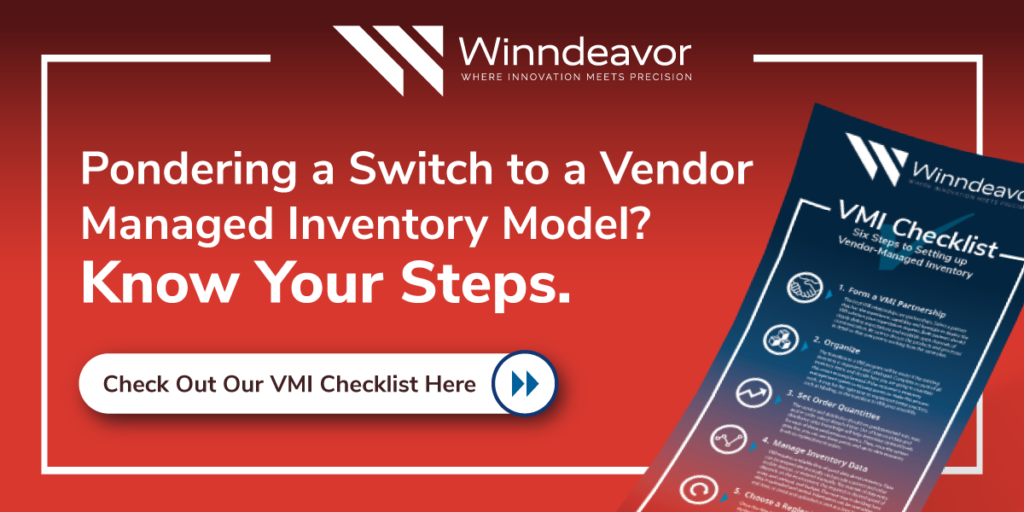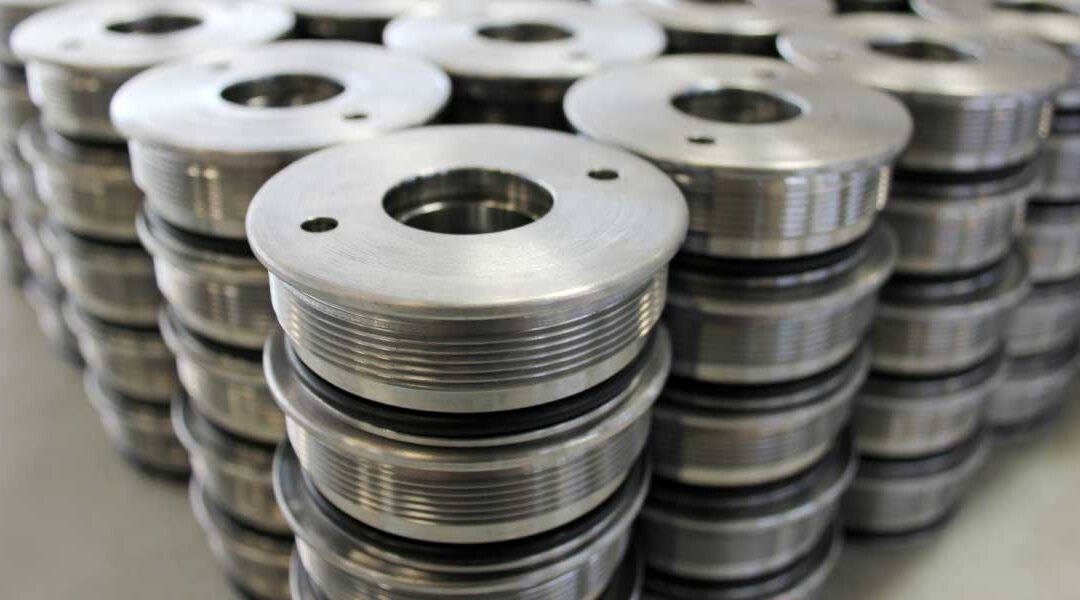Here at Winndeavor, we have made our admiration of the Vendor-Managed Inventory—or VMI—relationship no secret. We have not only investigated what a VMI partnership is, but we’ve also already pondered the question of what benefits does a VMI provide to buyers. We just can’t get enough! Let’s take a look at six more benefits of a vendor-managed inventory:
- Reduced inventory costs
- Streamlined processes
- Reduce overstock and shortages
- Improve workflow and productivity
- More control
- Valued partnership
Click Here to Read: The Ins And Outs Of 5-Axis Machining
Reduce Inventory Costs
When better inventory management systems are in place, you are able to lower on-hand inventory. This means less waste and obsolescence and it means fewer people are needed to manage the inventory. On the ordering side, working with a VMI partner allows you to reduce the “soft costs” which add up when many parts are ordered. A VMI takes advantage of their purchasing power because of the sheer volume of ordering they do.
Streamlined Processes
Vendor-Managed Inventory systems look at many technologies and decide which ones will best automate processes (both simple or complex) throughout the supply chain. This removes unnecessary steps and friction from the process, which equals more efficiency for every part ordered, delivered, stored, and replenished.
Reduced Inventory Overstocks and Stock Shortages
VMI can reduce both overstock and shortages. As a result, the VMI partnership reduces uncertainty—which can prove to be a major problem for customers. Uncertainty can also be costly: sales will be lost from stock shortages and storage costs skyrocket if items are overstocked. VMI partnerships guarantee on-time deliveries wherever and whenever they’re needed, and they look for ways to continually enhance operations for cost savings and quality improvements.

Manufacturers can reduce storage costs and eliminate the risk of shortages with a good VMI partner.
Improved Workflow and Productivity
Inventory management alone cannot promise increased productivity for your organization, but an improved workflow can definitely help. A good VMI partner will look at your current workflow—everything from receiving to replenishment—and help find ways to remove steps, increase efficiency, and save time and money.
More Control
VMI gives vendors more control so they can accurately predict demand. Because of this, production can be more efficient: by practicing lean manufacturing and making deliveries when needed. In addition, vendors using a VMI will have complete visibility into customers’ inventory levels, so they can better meet demand, reduce errors, and, therefore, costs.
Valued Partnership
The VMI strategy requires organizations to link their business processes together. Ultimately, this means they link their businesses together—which creates a more familiar working relationship. VMI vendors become more valuable suppliers, which brings an increase to strategic communication.
At the end of the day, when companies combine their resources, talent, and energies towards common goals, everyone benefits as they produce more innovative solutions for more customers at a lower cost. Both parties become more focused on efficiency and profitability.





